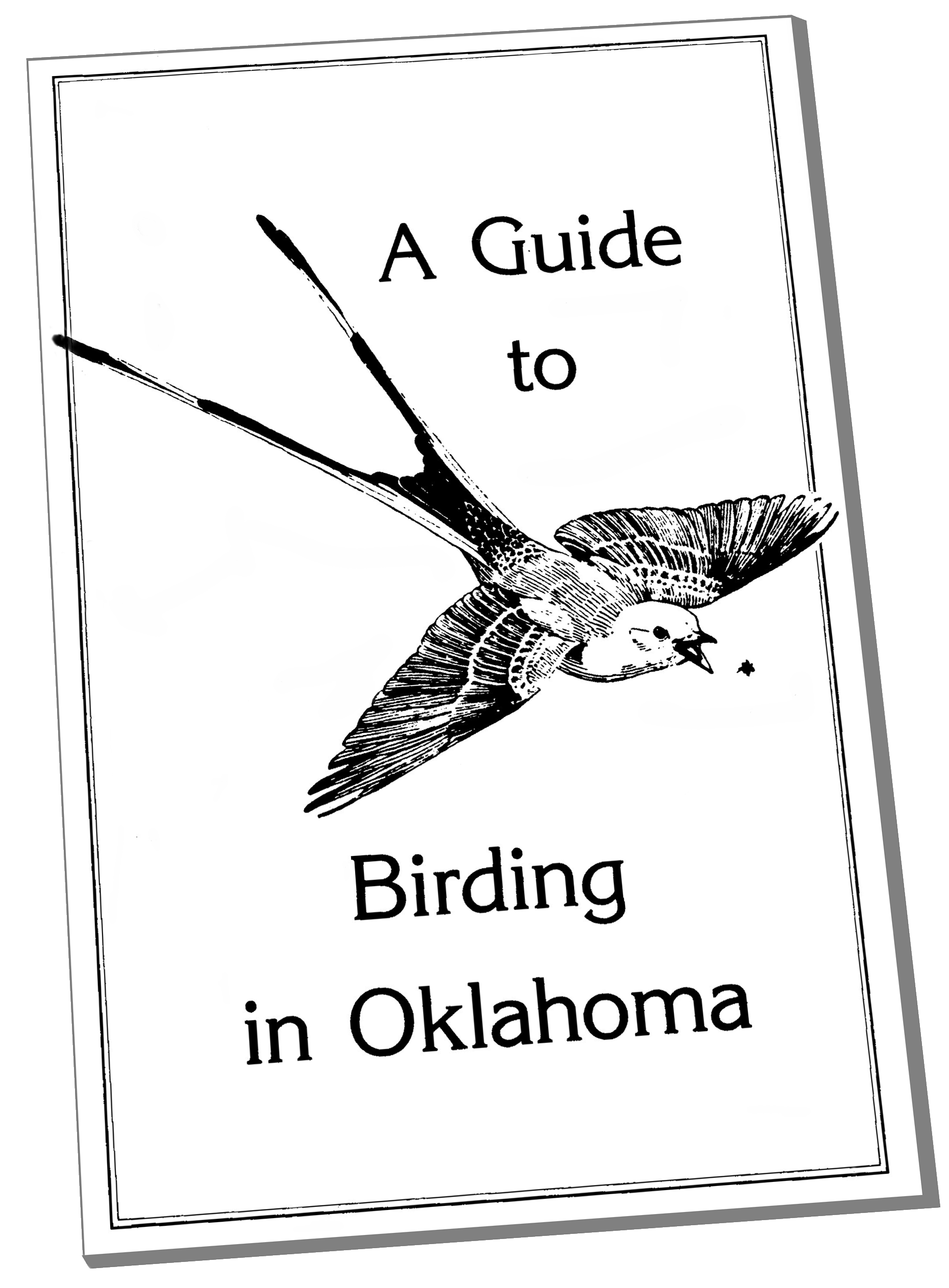From Tulsa, exit I 244 on US 75 and travel north to 186 St. N (19.5). Exit left on 186 St. to begin a route through a varied habitat of open grasslands, brushy fields, and wooded areas that include riparian woodlands of Bird Creek, the principal drainage of northwestern Tulsa County. Extensive grasslands, part of large ranches, are accessible only from the roads and a spotting scope is required for bird identification in most locations. Land use in the Skiatook area also includes a Christmas tree farm.
In winter Rough-legged Hawks, Northern Harriers, Great-tailed Grackles, and other blackbirds can be observed along 186 St. Cliff and Barn swallows assemble before fall migration. Two miles west of US 75, a left turn to Lewis Ave. leads south along a road that until 1985 bordered a long shallow pond, now drained with only casual water to attract migrating shorebirds, summer egrets and herons. The intersection with 176 St. N is a particularly good area. Eastern Bluebird, Common Bobwhite, American Kestrel, and Loggerhead Shrike are fairly common. In spring Veery, Swainson's Thrush, several species of warblers, and Empidonax flycatchers are seen and heard. Look for nesting Bell's Vireo, Gray Catbird, Brown Thrasher, and Northern Oriole. Barred Owls and Merlins have been observed in the trees to the west and south of this intersection. Rose-breasted Grosbeaks have been found in the spring and fall every year since 1981 and in July, 1983, as possible nesters.
The road east ends at a large expanse of grassland. A rancher states that Greater Prairie-Chickens feed in early morning near a cattle feeding shed approximately 0.7 mile east. Smith's Longspurs can be seen in winter; occasionally found are Prairie Falcons and several Red-tailed Hawks. If snow is on the ground, longspurs and Horned Larks will feed at road edges. A right turn from Lewis to 176 St. will lead west to Peoria (1.0) and to SH 11 (2.0) past open plowed fields in fall, pastures and weedy fence rows in spring and summer. Good cover is available at 176 St. and Peoria on all four corners with trees, brush, and fallen trees, good sparrow and woodpecker country.
Many dead-end roads lead east and west from Peoria, making it necessary to retrace some parts of the route. From 176 St. go north on Peoria to 186 St., then left to Hillside Road. Continuing west is a graveled lane with a wooded ravine and pond that ends at a rural residence.
Turning left off 186 St. on Hillside Road; continuing past a small cemetery and a dairy farm with a pond; turning past a low, wet area and a small pecan orchard with brush piles, takes one through good wren and sparrow habitat and to SH 11 and 184 St. N. The highway turns northwest around low, wooded bluffs as 186 St. N. continues west as a graveled road lined with pecan trees and brush on one side and open fields on the other for 0.5 mile before curving right into Osage County. Winter sparrows--White-throated, White-crowned, American Tree and Field--and several woodpeckers are here.
Much the same habitat prevails west of SH 11 on 176 St. which ends at a residence. Two small creeks, Skunk and Skalall, drain into Bird Creek. During heavy rains a considerable amount of flooding occurs in and around Skiatook. Several of these roads are under water during flood conditions, and caution should be used. East of SH 11 is a one-way bridge over a wooded creek that should be checked for woodpeckers, nuthatches, and hawks. Savannah and Tree sparrows will be at wood edges in winter. Continue east on 176 St. to go south on Peoria. A small residential section is on 166 St., the road going east leading to a prairie fence before turning south to end at more woodlands. West of Peoria is a Christmas tree farm on 166 St. Left off Peoria on 156 St. as one travels south is wooded Skunk Creek. This road ends at Lewis which goes south to SH 20 (146 St. N). Lewis continues south across SH 20 a short distance on a road with weedy fields, scattered woods and brush before ending near grasslands. Going west from Lewis on SH 20 look for gulls in fields during fall and winter.
Before crossing the Bird Creek bridge there is a turn-off to the left at the Skiatook sewage ponds. All five species of swallows have been found here in spring and fall, dabbling ducks in winter, and, if the ponds are dry, shorebirds in migration.
Immediately north of SH 20 on the east side of SH 11 is a marshy draw where Great-tailed Grackles and Red-winged Blackbirds have been counted in the hundreds. Farther on is a small, willow-lined creek, an oxbow of Bird Creek, where dark-phased Red-tailed Hawks have been reported. South of Skiatook on SH 11, exit left on 136 St. to follow a "dog-leg" loop back to 126 St. N, passing open fields with brush and crossing the heavily wooded Bird Creek again, just before reaching Peoria. Continue east on 126 St. to look for Rough-legged Hawk and Prairie Falcon which have been observed in December flying across the fields and perched on utility poles. Near a marshy area south of 126 St. on the east side of Harvard it is possible to find Yellow-crowned Night-Herons in spring; Painted Buntings, Blue Grosbeaks, and Indigo Buntings in roadside trees in summer.
To reach Osage Road and the railroad which parallels it to the west in Osage County, drive west on 136 St. from SH 11; turn left onto Osage Road, then south to the first road on the right and drive a short distance to the railroad tracks. Walk south along the tracks to ponds and marshy ditches with brushy areas where Tree and Harris's sparrows can be found in winter. Look for Kestrels and hawks on both sides of the tracks in pasture trees.
Additional Info
New Paragraph


